There's a moment every morning — before the emails, before the deadlines, before the printers warm up — when the studio feels almost like a greenhouse right before sunrise. Someone's kettle is whistling. Someone else is sorting dried florals on the big birch table we dragged in from the antique store down the street. And somewhere in that mix, one of us has already dipped a brush into gouache.
This is usually how our hand-painted fabric designs begin: quietly, without fanfare, without concern for what SEO will favor or what the algorithms think people want. For us, the story always comes first. The marks come next. Everything digital happens much later.
But make no mistake — we're students of the digital world too. "Surface pattern design" may be the industry term, but inside our studio it's just the language we use to translate memories, moods, and lived textures into something repeatable. And even as AI swells across the internet in uniform clouds of perfect-but-empty visuals, our work remains defiantly human.
It has to. Otherwise, what's the point?
Where Our Designs Really Begin
People often assume a pattern begins with a sketch.
It actually begins with a conversation.
Most days, it sounds like:
"Do you remember those hydrangeas outside your grandmother's window?"
"This color reminds me of old wallpaper in a seaside cottage."
"Something about this shape feels like early January light."
One of us will pause, tilt our head, and suddenly an idea that didn't exist five minutes earlier becomes the seed of a collection.
We don't start with trends. We start with something more fragile and less predictable: shared observation. Someone notices a shadow. Someone else notices the way steam curls above a cup. The smallest sensory detail can trigger a full visual direction.
This is the part no software can mimic — the human chain reaction that turns memory into motif.
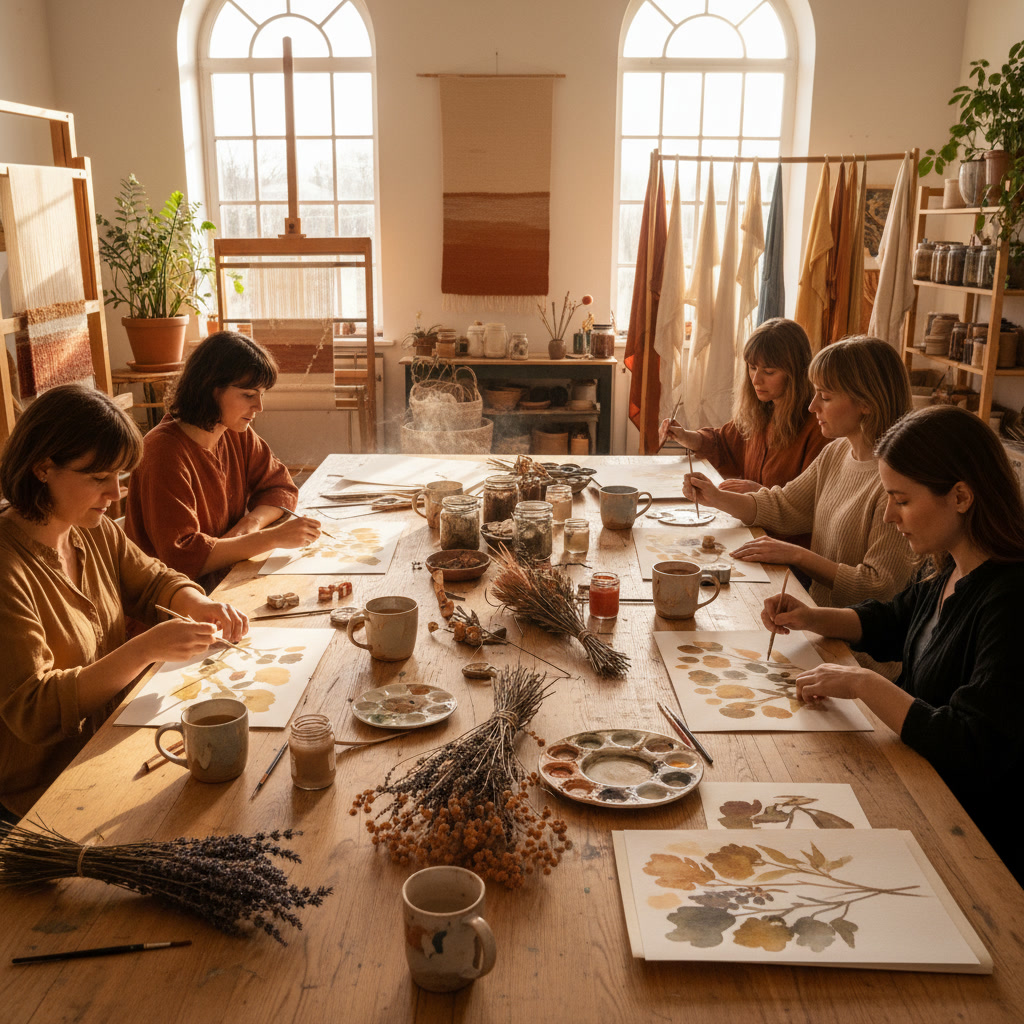
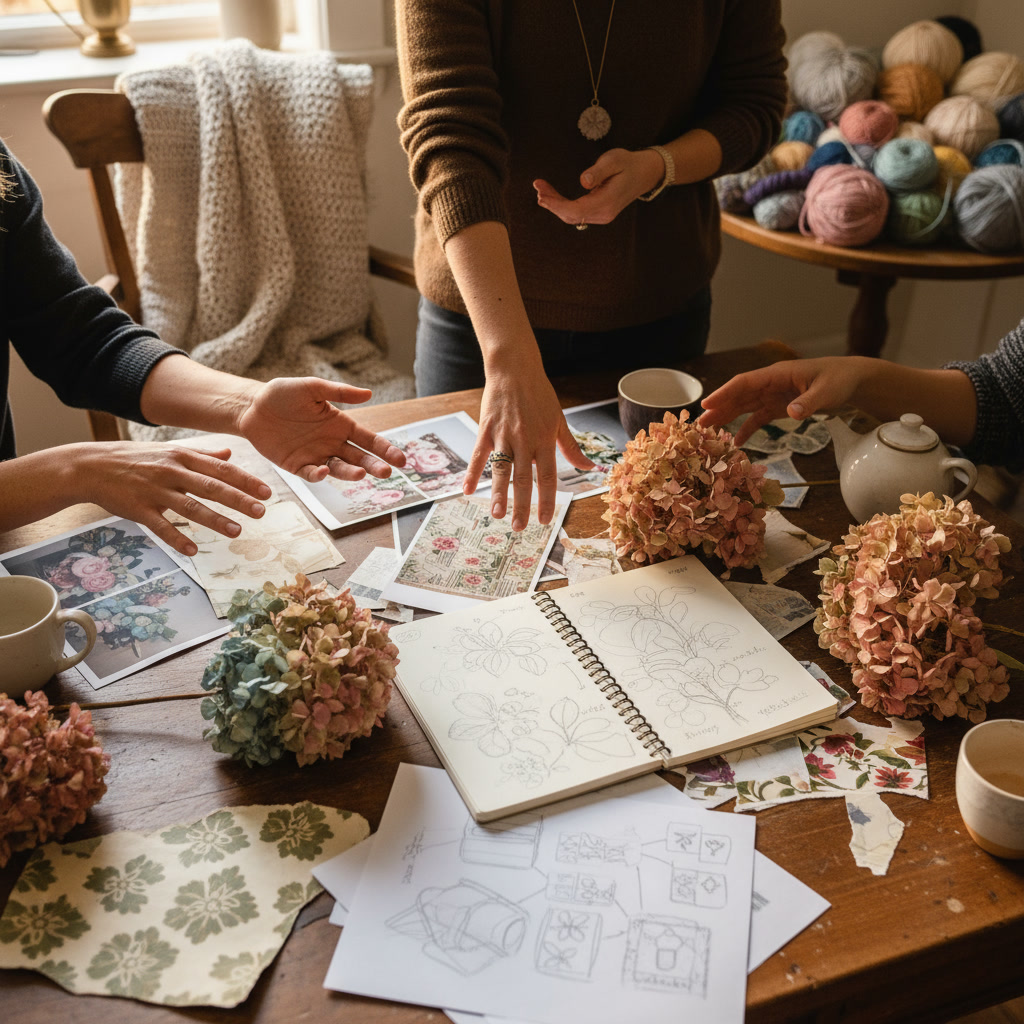
Paint Before Pixels
Once someone sparks the idea, brushes start appearing.
This is where hand-painted fabric design becomes the heart of our workflow.
We work with gouache, watercolor, ink, oil pastels when someone is feeling bold, and charcoal when someone needs a bit of abrasion in their day. One of our designers paints with the softest hand you've ever seen — everything she touches turns into a botanical whisper. Another has a talent for bold, unapologetic shapes. One is our texture queen, using pigment like a sculptor.
No two of us paint alike, and that's the best part.
On any given day, you'll see:
- pages drying on the racks
- palettes smeared in seven versions of the same green
- hands stained from mixing colors "just a little bit warmer"
- a half-dozen motifs scattered across the floor for rearranging
The room always smells faintly of paper and the earthy mineral undertone of wet paint — the scent that reminds us we're making something real, something tactile.
Even when the final product ends up digital, the spirit behind it is undeniably analog.
The Soul Is in the Imperfections
AI is incredible at producing polished visuals.
But what it lacks — and always will — is the emotional residue of a human making a mark.
When we paint, the unexpected happens constantly:
- A petal gets too dark, so someone adds an extra layer and suddenly it becomes the focal point.
- A watery bloom spreads further than intended and becomes the reason we build an entire panel around it.
- An ink line wobbles. We leave it. It becomes the charm.
Those imperfections aren't flaws.
They're proof.
Proof that the art wasn't generated.
It was made.
By hands.
By people.
By us.
When our clients — especially women in their 30s, 40s, and 50s who adore textiles — look at a finished fabric, they can feel that difference instantly. It's softness. It's warmth. It's humanity. It's the quiet pulse inside the work.
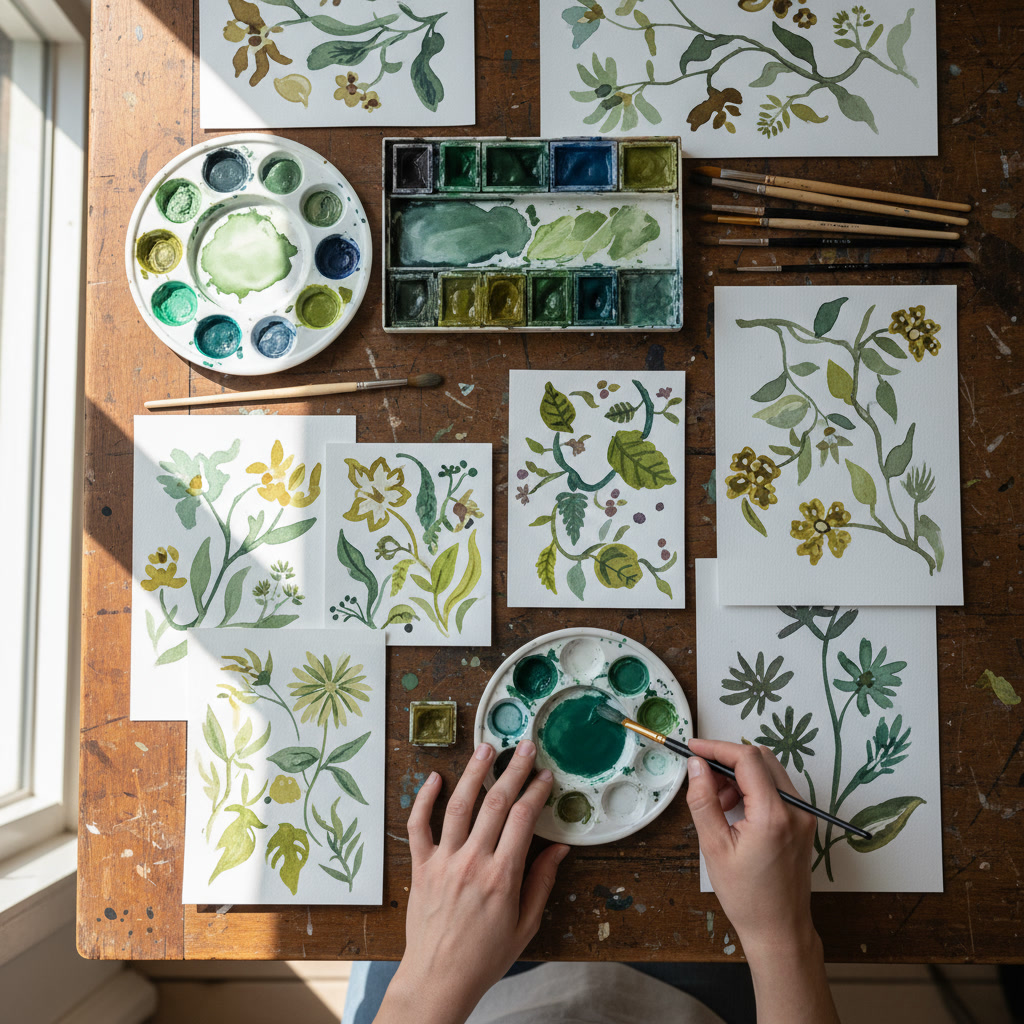
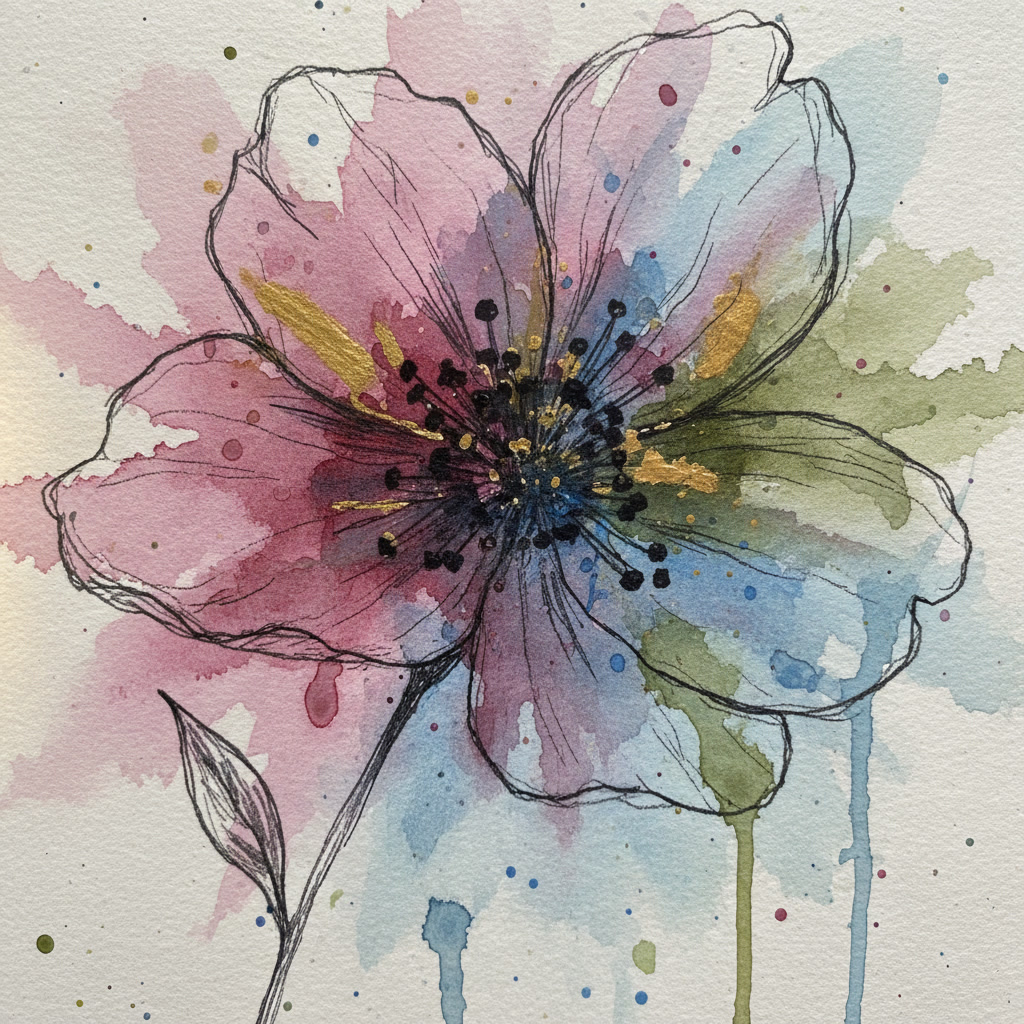
Bringing It Into the Digital Space
Eventually, after days (or weeks) of painting, someone will tiptoe around the studio collecting sheets to scan. This part of the process has its own rhythm: the careful flattening of paper, the soft mechanical hum of the scanner, the way colors shift ever so slightly when they translate into pixels.
Digitizing isn't the enemy.
Overcorrecting is.
We don't erase textures.
We don't sterilize edges.
We don't trim away the human parts.
Instead, we preserve the brushstrokes — even build collections around them. We open the files together, gathered around screens, deciding as a team where the motif wants to go. The repeat doesn't get forced into technical perfection. It grows into its shape naturally, as if the digital canvas were just another sheet of paper.
Inside our studio, the boundaries between traditional and digital blur intentionally.
Hand and software become equal partners.
Why Our Audience Loves This Approach
Most of the women who follow our work share the same sentiment:
"I want fabrics that feel like they came from a real place."
And that's exactly what hand-painted design allows.
A flat vector can be beautiful.
But a hand-painted motif carries presence.
It carries time.
In a world where design is speeding up, our work slows things down.
It invites people to look twice, trace the edge of a line, ask where this pattern came from, imagine the hands that made it.
That emotional resonance is the reason our fabric collections consistently sell well, get picked up for licensing, and continue to grow in reach. People aren't buying just a pattern — they're buying a feeling.

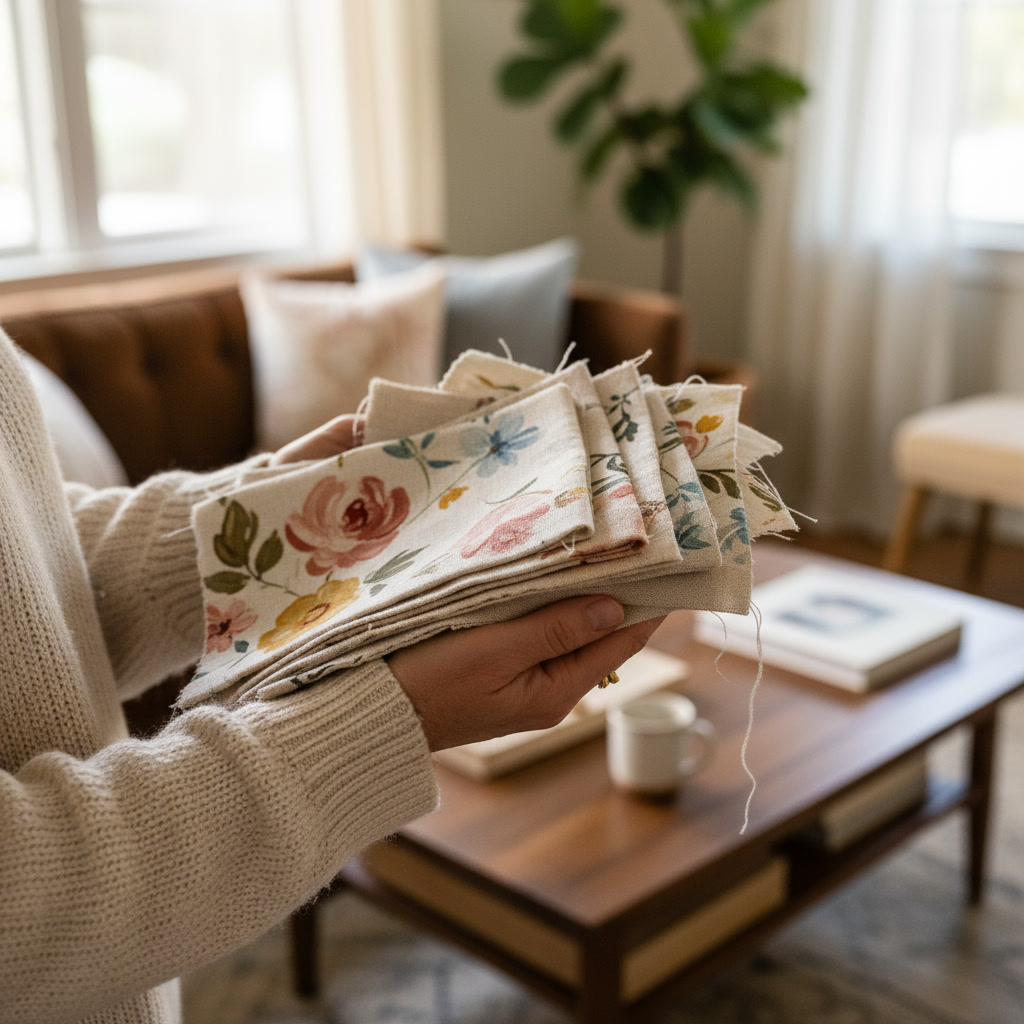
The Story of the Pattern That Almost Didn't Happen
One of our most-loved collections (you know the one — the moody botanical with the stormy green palette) began with a mistake.
One afternoon, someone dropped a bead of water onto a still-wet gouache leaf. It created a faint halo bloom, so subtle it almost disappeared when dry. But it didn't. It stayed — ghostlike, delicate, heartbreakingly beautiful.
We built an entire collection around that bloom.
Not because it was planned.
But because it was alive.
That collection went on to become one of our most licensed sets.
AI could never have created that halo.
It was born from a human slip.
Our favorite kind.
Why We Still Choose "Slow" When the Industry Wants Fast
We get asked often if we'll ever switch to fully digital production.
The answer is no.
We may embrace digital tools — and we do — but we won't abandon the human origin.
The truth is simple:
Hand-painted fabric design gives us something the digital world can't replicate — a reason for the viewer to feel connected.
And as a studio of six very different artists, that connection is our superpower.
It's why clients return, why collaborations deepen, why our work stands out in a sea of instant imagery.
We don't want to be part of the visual noise.
We want to be part of what feels real.


If You Want Fabrics That Feel Alive…
If you're a designer, boutique owner, or brand that wants textile work created with soul — hand-painted, emotionally rich, story-driven — we'd love to collaborate.
Our studio builds:
- custom collections
- licensing-ready artwork
- hand-painted florals
- seasonal textiles
- signature prints shaped around your story
Let's make something honest together.

